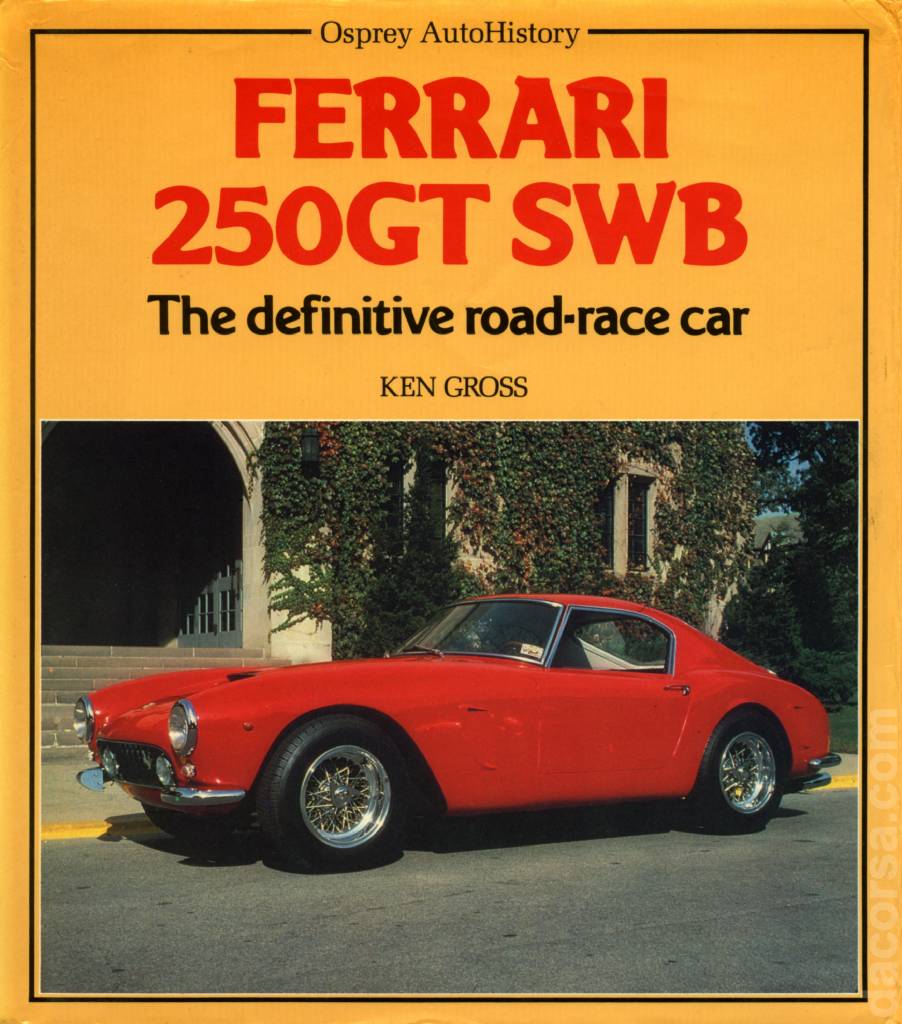Ferrari 250 GT SWB
Osprey AutoHistory
| Language | |
| Author | Ken Gross |
| Editor | Tim Parker |
| Publishing | Oprey Publishing Limited, London, ISBN 0-85045-622-3, 1985 |
| Dimensions | 135 pages, 193 x 220 mm |
Ferrari 250 GT SWB; the definitive road-race car
To place the "SWB" (short wheel base) in contect one has to look at the cars before and after it. The Ferraris of the late 1940s and 50s were either factory racing cars or road cars which needed modification to race; the latter never really that successfully. If you didn't have a factory car you usually didn't win. The cars were developing and even the immediately preceding 250 GT TDF (Tour de France, actually long wheelbase) were nopt especially well-balanced, fast or easy to drive.
The cars that came after the SWB were different. Simply they were for either racing or road use. For racing came the 250 GTO, for road a series of 250s, 275s and 330s - getting bigger all the time. None except the GTO were successful race cars, and the GTO needed 'cooling' to use on the road, although some people did, and do. The SWB was the last Ferrari which was supreme on road and track, without, perhaps, anything more than pumping the tyres up. It was a weekday commuter car and a weekend race winner. Supreme at Le Mans or Sebring, superb on Fifth Avenue. And it was so goodlooking to boot.
Its delicately balanced technical specification - 3-litre, V12 engine with near 300 horsepower, four-wheel disc brakes, lightweight, 2400mm wheelbase - coupled with that stunning Pininfarina designed, Scaglietti built bodywork, will never be surpassed.
As part of the extensive series of Oprey AutoHistory books, there are 8 known issues highlighting particular Ferraris from the sixties, seventies and early eighties. Models covered include 12- and 8-cylinders Ferraris and the 6-cylinder Dinos.

Table of Contents
| Page | Section | Description |
|---|---|---|
| 6 | Introduction | |
| 10 | Chapter 1 | Background |
| 19 | Chapter 2 | The LWB interim berlinettas |
| 25 | Chapter 3 | Design and development |
| 45 | Chapter 4 | SWB engines |
| 56 | Chapter 5 | Coachwork |
| 82 | Chapter 6 | Special Carrozzerie |
| 96 | Chapter 7 | Racing highlights |
| 107 | Chapter 8 | What's it like to drive? |
| 119 | Chapter 9 | SWB successors |
| 124 | Specifications | |
| 125 | Production record | |
| 129 | Competition | |
| 132 | Special-bodied SWBs | |
| 133 | Acknowledgements | |
| 134 | Index |